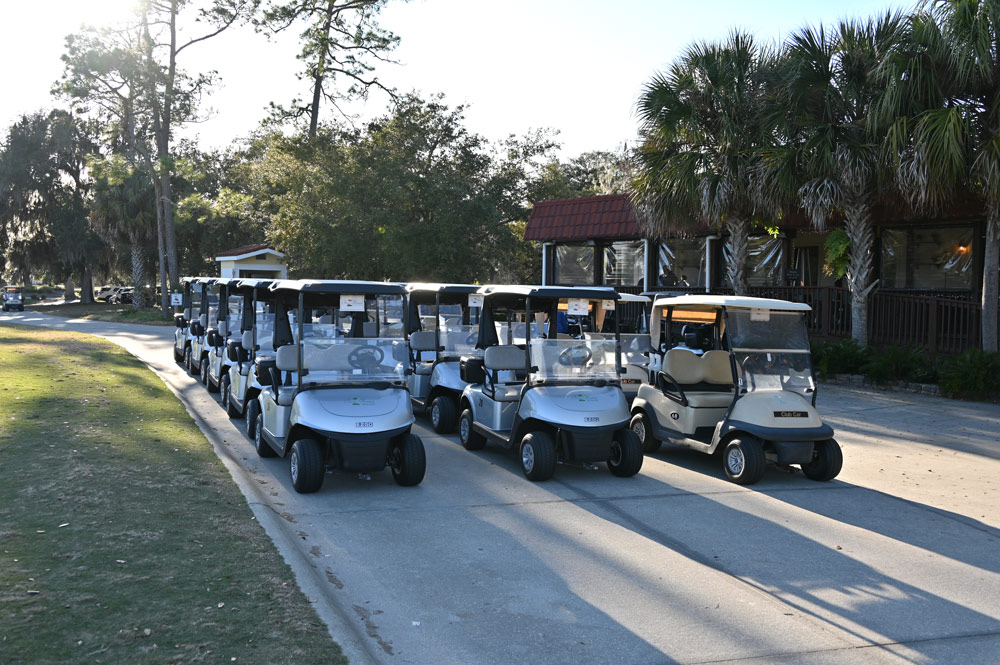
The Palm Coast City Council deadlocked over the future of the Palm Harbor Golf Club today, split between Charles Gambaro and Dave Sullivan, who want to put the course up for sale at a starting bid of $2 million, and Theresa Pontieri and Mike Norris, who want to keep it under city ownership.
Council member Ty Miller might have broken the tie. He was absent, leaving Acting City Manager Lauren Johnston trying to figure out what the council wanted to do next.
There are other proposals on the table, such as sharply raising rates, bringing in new management, reconfiguring overhead costs, and even asking Loopers, the successful restaurant at the golf club, to renegotiate its lease for a little profit sharing that would benefit the club’s bottom line. But the only thing the council agreed to was to explore all those options further and talk again soon, even though previous councils have done almost exactly the same things for years, almost going back to the city’s acquisition of the 141-acre property in 2008.
“You guys talked a little bit all over the place,” Johnston told them before indemnifying city staff for the club’s years of irrigating its greens with red ink. “Previous city council had a different philosophy and different vision, and we acted on that policy and vision,” she said. “So to blame staff for not meeting an objective now, well, that objective wasn’t the objective five years ago or even seven years ago.”
In fairness to previous councils going back to the club’s earliest years–as early as 2010 and 2011, when the council first started agonizing over deficits–the goal has never been not to run at least a break-even operation. ITT opened the golf course in 1973. The city bought it in 2008 and renovated it for several million dollars in 2009.
But Johnston was accurate in two regards, though she only alluded to the “ominous clouds hanging over the facility”: Until this year, none of the previous councils required the golf course’s ledgers to reflect all costs. By excluding capital costs, which amounted to about $10 million by around 2015 and kept adding up since, the council masked the operation’s true costs, and the extent of taxpayer subsidies necessary to keep it going.
Starting in 2017, and to get around the deception with a greener deception, the council folded the golf course into its parks and recreation operations, redefining it as an amenity no different than a public park, even though it is no such thing: it is a pay-to-play operation, closed to people who like to walk into a park and hang out for the fun of it (or walk onto a free municipal tennis court and play).
The city administration, however, never fully played along with the deception. It kept clear profit and loss statements for the club, which showed that the club kept losing money, with an exceptional year or two. That drew the previous council’s attention (toward the end of his four-year tenure, Council member Ed Danko started harping on accumulating losses there).
And that got them to the point where they are today, which is really no different than the point other councils were in 2013 or 2015 or even 2017, when those councils also discussed selling, discussed better management, discussed cutting costs, discussed creative ways to increase revenue, rate increases, marketing and special programs included. But it is the precious province of new council members at times to imagine themselves reinventors of the wheel, as this council has been doing with Palm Harbor Golf Club.
In late April the council directed the administration to work up a request for proposal to sell the property. The outgoing Chief of Staff Jason DeLorenzo presented that plan today, along with the appraisal, conducted by CBRE Valuation & Advisory Services on May 23, that put the value of the “as is” property at $1.83 million.
According to the RFP, anyone proposing to buy the golf course would have to submit a plan. The plan would have to include a transition timeline, a capital plan and a business plan, past history running a golf course, and proof of financial soundness. The sale would be contingent on a deed restriction. The property would have to remain a golf course in perpetuity. If it fails as a golf club, it would revert back to the city.
DeLorenzo also addressed the club’s current finances and the council’s interest in folding all club costs into one column, capital costs included. Irrigation and renovation of the greens would cost $1.5 million over the next five years, for example. Those expenses were never part of operating costs.
When the administration last presented an update on the club, in late April, it was projecting to all but break even this year. Not anymore. The current projection is for a $165,000 deficit. The reason for the difference is not clear.
Rates were increased last year. But the rates again did not reflect capital costs. Council member Theresa Pontieri asked for those costs to be part of the formula that would set rates in line with total costs, capital included. The new rates would have to increase 18 percent to 26 percent, with Palm Coast residents getting hit with the largest percentage increases, though their rates would still remain $10 to $20 below those paid by Florida residents or others for an 18-hole round.
For example, a non-Florida resident paying $56.65 for an 18-hole round in morning hours would have to pay $66.75 under the new rates. A Palm Coast resident’s fee would go from $39.66 to $49.76. Nine-hole rate increases would be even steeper, with Palm Coast residents seeing a 4e percent increase and non-residents seeing a 30 percent increase. (See the rates here.)
If people keep playing through the new rates, the course would go from a projected deficit of $460,573 to a surplus of nearly $77,000. If rates are to be raised, however, Pontieri is not interested in raising them by that much. She spoke of raising them by about half those proportions.
DeLorenzo’s presentation was clear. The council’s response was fragmented.
“I think $2 million is a fair opening your base bid,” Gambaro said. He also wants whoever buys the course to be required to operate the club as a public course–in other words, the club could not be open to members only. “What prompted me is the proven record of our inability as a team to be able to run this golf course in the black, and that’s without even including the capital expenditures,” he said.
To Gambaro, it would be “irresponsible” not to put out the RFP “to see what we can get.” If it were successful, it would save the city $400,000 a year, it would generate revenue from the sale, and it would generate revenue from utilities and taxes in the future. “It still doesn’t overcome the money that we’ve lost,” he said. “But what I do want if a private entity does purchase it, is a golf course that is a huge destination stop for people to get off I-95 and play golf there.” Council member Dave Sullivan largely agreed, especially with moving forward with the RFP.
Pontieri questioned the appraisal. “I don’t agree with putting the golf course up for sale for $2 million,” she said, recalling how Jacoby Development in 2016 bought a 3.7-acre portion of the property for $5.5 million (JDI donated the property to the city in 2022.) “ I don’t know how this depreciated to this extent 10 years later,” Pontieri said. “I also know that when they donated the golf course to us, the tax write-off that they took for it was much larger than $1.8 million. So we’ve got some issues here before we decide to make this decision.”
But Pontieri wasn’t even ready to get that far. “I’m not prepared to give direction to staff at this point. I’m inclined to try to figure out how we can keep it,” she said. She doesn’t want to lose money on the golf course. “I don’t think we should be subsidizing people playing golf. But I think that if we get in a little bit deeper, we can fix this rather than selling off what is a very precious asset to our community.”
One of the issues she wants to fix is the amount the course pays for other city services. For example, the course allocates $40,000 a year to IT. That doesn’t make sense to Pontieri. It also allocates money for its fleet management. That makes more sense to her, but she wants harder numbers to look at to figure out if they’re fair.
Yet another issue is the city’s lease with Loopers. She said golf courses can make up to half a million dollars on drinks. Loopers pays $18,000 a year. “When I was looking at the comparables in the appraisal for our revenues versus other course revenues, I was floored by what other courses are making on food and beverage,” she said. “We missed the boat, and Loopers got a deal.” Pontieri was part of that council. She conceded: “I didn’t know any better.”
Pontieri said Loopers is a “great restaurant, they provide a great service to our community. I’m glad they’re there, but I think that it benefits Loopers for the golf course to stay with the city of Palm Coast. Perhaps we go back to them and see if maybe we can negotiate some type of 1 or 2 percent, a low percentage, of their revenues as a part of their lease agreement with the city in an effort to keep this golf course with this city. They don’t have to.”
Flagler Beach has just such an arrangement with the Funky Pelican, the restaurant leasing its space on the pier: the lease calls for the restaurant to turn over 3 percent of all gross sales in excess of $1 million per year. (It started at 2 percent in 2011, when the restaurant opened, jumping to 3 in 2016. The restaurant pays $4,500 a month in rent, up from $3,000 in 2011.)
Pontieri prizes the city’s relationship with Loopers, and it was from that perspective that she asked: “Are you all willing to renegotiate the lease just a little bit, just to help out a little bit?”
Jamie Boudreau, who co-owns Loopers, the recently-renovated Landing Strip at the airport and Beachfront Grille in Flagler Beach, was not in the council chamber during the discussion. He said in an interview he appreciated the council member’s compliments. “We do have a lease in place, we did put out a lot of money up front, we do have a couple of options after year five and after year 10,” he said, “but she’s right about a couple of things: we do have a great relationship with the city, we have no desire to ruin a good relationship, so if they have an offer that makes sense, out of respect for her, we certainly would listen. But for the most part we’re certainly set in our lease and we’re happy with it.”
As for the club itself, “I wish I could buy it,” he said. “I could make it work.” Perhaps that’s how the city might approach him.
Norris is outright opposed to a sale as well as to the appraisal. “I was not here when you guys talked about this and put this RFP out,” he said. It was the day the council censured him over his violations of the charter and other misconduct. He has declined to be briefed on the golf club issue, however, as he has all other city issues, refusing to meet with the acting city manager. If the golf course were sold, he said, “I know full well that this, this property, will wind up as housing or apartments or something else, not as it was intended.” He wants better management. (The course’s manager recently quit.)
“We don’t have to make money on the golf course. All we got to do is break even,” he said. He would support raising fees to that end, suggesting that he’d support the proposed schedule. “The fees is a good idea,” he said. He also wants students to pay fees, even though students use the course in exchange for the city using school grounds.
The council’s split extended to the sort of management the facility should have, with Norris wanting it kept in-house, and Sullivan wanting broader options. That left Johnston having to reevaluate smaller elements of the operation on its periphery–whether to lease rather than buy vehicles for the course, whether to renegotiate the joint agreement with the school district (for those fees Norris wants students to pay), asking Loopers to renegotiate the lease, and possibly raise fees, but to what extent is not clear.
Dennis McDonald, a local gadfly who frequently addresses and berates the council and other local governments, often with misinformation, did so today, questioning Gambaro and Sullivan from the lectern during public comments: “You two gentlemen here, are you telling me that golf courses don’t make money? All the other golf courses in the world don’t make any money?” he asked. “Of course, that would be stupid to respond to that. Okay, the point is, they do make money. So the question to ask here is, how come our golf course doesn’t make money?”
If there was stupidity, it was not Sullivan’s or Gambaro’s. McDonald had clearly not researched the matter.
The Reason Foundation in 2022 did. It reviewed the 2020 balance sheets of 221 public golf courses across the country, finding that 70 percent of them lost a combined $61 million. The report acknowledged that Covid affected some of the courses in states affected by long shut-downs. But two years before Covid, a USA Today investigation reported by Golfweek found that Florida municipal golf courses alone had lost a combined $100 million over the previous five years, requiring a combined $65 million to stay in business.
McDonald’s insults of council members aside, the council’s challenge is neither new for Palm Coast nor unusual for cities across the state and the country.














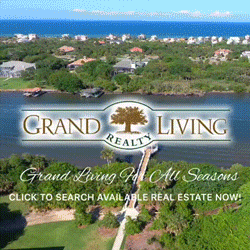

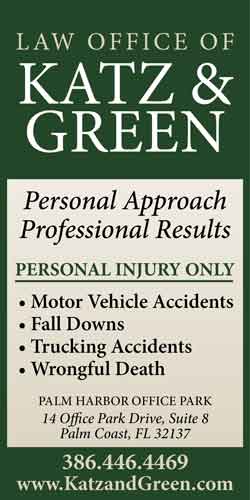






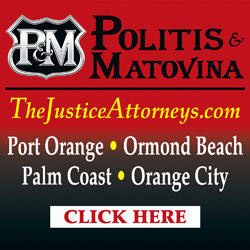
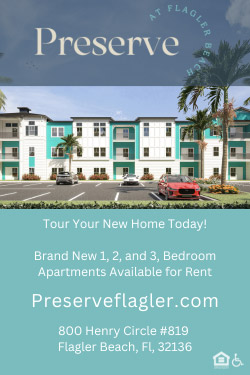



Jason Quadro says
Who asked Danko for his input? If he says sell it, then the correct answer is to fix it.
don miller says
they ding the golf course expense budget for $478K fir IT and “fleet management”. Without that it makes over $250K per year. The restaurant makes them only rent money when it could be 500K income on food and beverages. This City council has probable bankrupted their own households the way the manage out money. Let’s see how much they lose on ballfields, tennis courts, pools and parks. What’s the difference? They are willing to lose on some recreation but not a little on golf. Looney.They pick on the golfing active adults who bear the tax brunt the most.
Dismayed says
The purpose of a “city” golf course is to make it affordable to families who do not live in “golf communities” and who cannot afford exoribant fees to play golf. How do you expect to grow the game if the average person cannot afford to come to the course. Palm Coast is no longer exclusively wealthy.
Critical Eye says
Sell it! Sell the golf course as fast as possible. It’s nothing but trouble. Dump it now!!!
Dennis C Rathsam says
Looks like a perfect spot for low income housing,Cant you see the vultures flying overhead! One thing about section 8, the landlord always gets his money. Throw in a Dollar General, & a liquior store…..HAPPY DAYS ARE HERE AGAIN!
Mike Pullen says
The reason it needs to be sold is that no one in this article knows anything about running a golf course. Food and beverage income at that facility has zero chance of netting $500,000. The course needs to be sold thru an RFP or all complaints about operating in the red need to be dropped and everyone needs to get used to it.
Caddyshack says
Thank you, Ms. Pontieri and Mr. Norris for standing your ground. $2 million is too low of a price, which is one clue that city staff have not researched this or thought it through. The blogger writing here added important context that apparently escaped their analysis. And of course, all of the city’s parks and amenities “lose” money, so why pick on just this one?
Skibum says
Why do so many people think government should run like private businesses do, whether it be our local Palm Coast city government, the FL state government, or the federal govt? Government agencies are not, nor should they be looked at as some kind of for profit businesses! Governments are there to provide services to all of us based on the taxes they collect from all of us. Some services may be tailored more to specific individuals or groups who need more government assistance than others, but a lot of the services governments provide are “quality of life” services that include things like parks and recreation areas, public libraries, infrastructure such as sidewalks, bike paths, street lighting, road repairs, etc. Not to mention the very important public safety piece for law enforcement and firefighting to keep everyone safe.
Nowhere in government services is there anything that says government needs to make a profit off of things provided to citizens, yet time and time again we hear things like the city is losing money on the Palm Harbor golf course, how a certain restaurant that is no longer there somehow orchestrated a “sweetheart deal” as if having a restaurant open to the public adjacent to a city owned golf course is not a good idea or a win-win scenario for both the public as well as the city.
I wish people would use their brains a little more and realize that services and amenities provided to all of us by the city and at city owned properties should not be making a profit, otherwise they are overcharging all of us for those things. And if the city is losing money on something, either they need to view it as normal services provided to residents and businesses who pay local taxes, or in certain situations when warranted, vote to adjust taxes appropriately to deal with the deficit.
When all the council members want to do is try to figure out ways to cut tax revenue to appease those with loud voices who NEVER want to pay a cent for anything, our services will inevitably decrease right along with our quality of life. This is probably one of the most irritating and idiotic things I have found about this state!
celia pugliese says
None of those hollering to sell the PHGC now including Gambaro the number one culprit and buddies with Danko, that was reported had a prospective buyer and none of the other councilmen reside on, or adjacent to the golf course so their homes will never be devaluated over such an outreageous, arrogant demand. Some of the one’s here louding also envious of any golf activities, ignore that we around the golf course also subsizide the Southern Recreation Center $600,000/year in red like the mayor found out, the failed 1.2 millions unused kayak launch (rental gone) in Water Front Park, the free to all parks like the millionaire costly Holland Park and its splash pad no fee revenue there, Carter Park and its youth venues and many more we also subsidize “because are community amenities needed in Palm Coast as much as our Palm Harbor Golf Course”. Today 6/25 with a heat wave I drove by Palm Harbor Golf Course Driving Range and the parking lot was full and overflowed and all the players in the course. What is needed is to use the magnifying glass in how much city staff is charging to the over 1.6 millions golfers fees revenue. Missmanagement is what plagues our golf course. The arrogant insensitive suggestion to sell, forgets that when was donated last, the driving range to us, the developer took a millionaire write off to the IRS and if sold now the IRS will want the seller (city-us) to refund it back, I am sure. Do away with the abusive miss management and keep the PHGC that took the residents long years of hard battle to get it donated to us and preserved. The only reason they are fixed in the PHGC sale is because could be 168 acres of very profitable multifamily housing on it for greedy profits! ITT’s first community amenity was PHGC and the city was built around it! Big Thank You to Mayor Norris, Councilwoman Pontieri for looking into (IT 40,000 and bet even greater millionaire fleet charges) and TY to our city leader Dennis McDonald for pointing out to Gambaro and Sullivan the proper questions which are not insults! Maybe the school board should contribute our school taxes for the students playing on it! After all the school board closed the usage to 1,100 special needs, elderly and children with families membership of the Belle Terre and Swim Club pool use so now is dedicated to only “school staff” and students use. Those very members residents denied use that now are forced subsidizing the school students to play free in our PHGC! Mayor is right when it comes to fairness and nitty-gritty. The arrogant sale proposition, deserves insensitive arrogant replies.
William O'DOnnell says
Golf has many benefits that add to the quality of life. One’s health, social interaction, public investment in real-estate, attracting valuable, quality, home owners. Public golf provides one golf at a flatbreak even cost.
Gary says
Need to hire a company that their business is managing golf courses and doing the maintenance of the course.
The City of Jacksonville did this with their golf courses and they all are thriving.
A Golfer says
I am extremely disappointed that some council members want to sell the golf course. Misguided thoughts.
Palm Coast 2025Expenditures ( Taken from Palm Coast website ) ;
Approved budget Fiscal year 2025;
Parks and Recreation – $ 2,550,916.00
Sourthern Recreation Center – $ 664,495.00
Aquatic center – $ 500,301.00
Parks Maintaince – $ 3,382,805.00
sub total – $ 7,098,517.00
Palm Harbor Golf Course – $ 1,949,338.00
How much revenue is generated from Parks Maintenance ?
How much revenue is generated from the Sourthern Rec. Center ?
How much revenus is generated from Parks and Recreation ?
How much revenue is generated from the Aquatic center ?
I don’t use any of those amenity.s except the Golf course. Which for a couple that bot play golf spend in excess of $ 5,000.00 a year to play there. But yet part of my city taxes are going to pay for all of these. so noe City Council wants to sell the golf course. What are they thinking !
JC says
celia pugliese, please use paragraphs on your posts. Your posts where you don’t even use paragraphs is just gives you a stereotype that you are an angry boomer with nothing else to do to the point you just make a ultra long paragraph that no one wants to use.
Mike says
Again, overpaid employees! They can cut their payroll by 50%. Over staffed on the bag drop also over paid. Any other golf course pays bag staff minimum wage which includes free golf and tips. The city is paying these people more the $15 and hour plus tips and $5 golf. Bag drop people are not there to make a living most just want to golf. Also where else in the city is it ok to tip a city employee? Sell the place and it will turn around. Raise the rates and people will play elsewhere.
Critical Eye says
Celia Pugliese, there is absolutely nothing you like about Palm Coast. You disagree with whatever the situation is. Maybe a therapist can help you with that. You’re comments truly make no sense.
In reality the golf course is nothing more than a hindrance, a money pit, a drain on our cities economy.
Foolish to think the selfishness and lack of education of maybe 10-20 of the citizens wanting to keep shoveling money into the lost cause of the Palm harbor golf course is worthy of the attention. They and you Celia DO NOT REPRESENT the 110,000 other citizens of our community.
celia pugliese says
JC, first of all why do you cowardly use destructive critique from your high horse wearing a (maybe hooded) ID. I may be hitting the wasp nest and being effective, for you to keep trolling me allover social media while punching and hiding. You tag reality as an angry paragraph. You show to be a “troller” using an “alias” for a false identity to hide who you are and engage in online harassment against a proud boomer.
FlaglerLive says
JC’s comments are not “trolling,” but fair criticism in keeping with this site’s allowance to commenters to use assumed names. Celia Pugliese’s tendency to make baseless accusations will only be tolerated so far, and are tolerated to this extent only in recognition of her long-standing contributions to these comment sections going back 15 years. Ms. Pugliese, don’t ruin that track record.
JC says
celia pugliese, I don’t go on social media, so you making random statements is becoming old. Let me say that your ultra long posts without using paragraphs is not being effective, it is making you look like a stereotype. Also, you are not special by having your name posted on here. You aren’t a tough person, you are just a stereotypical angry boomer who have nothing better else to do than to complain when the world is changing around you.
Critical Eye says
JC don’t pay any attention to Celia Pugliese. She wrote the exact same thing to me in her previous comments. Everyone knows what she’s like and anyone with a brain pays her no attention. Shes just an old grouch unhappy with her life. Celia is the one that spends all her time on social media platforms harassing people and making mountains out of molehills. She should be writing herself with those nasty words and comments she makes to others.
Susan says
The city should keep it but bring in new management. It could be a great course for locals and visitors and as many said in the comments, should not necessarily make huge profits but should support itself. In my experience the past management has been rude and very unsupportive of young golfers. Get someone in there who understands customer service, the game if golf, community resources and you will once again have a great asset to our community.
Jimmy says
Clearly other private courses in the area are lobbying the board to dump this beautiful amenity so as to increase their revenue. May I remind the board, they work for the people of Palm Coast, not special interest groups – Additionally, I find it disgusting that a “journalist” would have the audacity to publicly ridicule a private citizen in an attempt to justify their animosity towards this individual. Reminds me of an old saying; “If you have nothing nice to say, shut-up”!